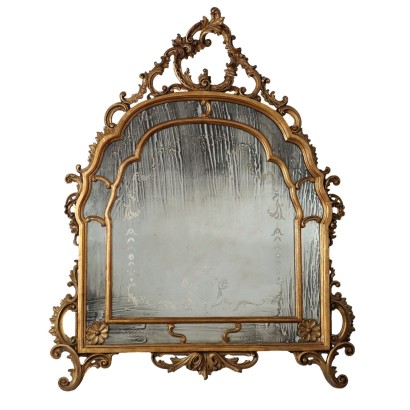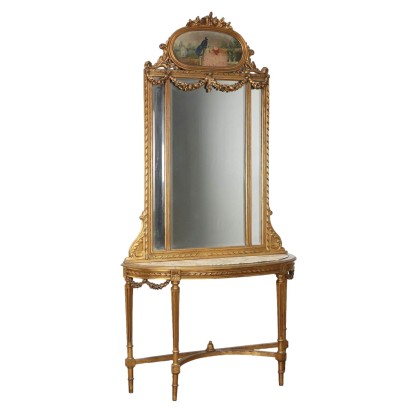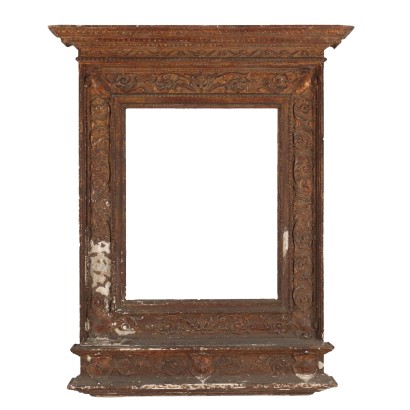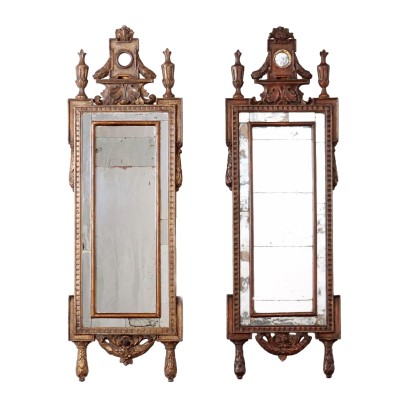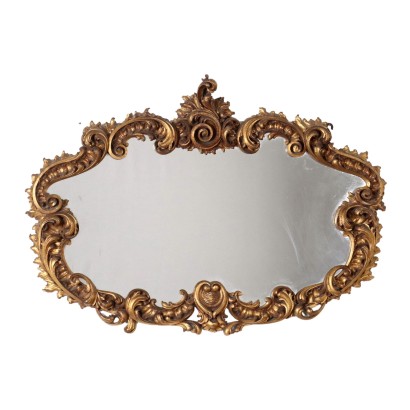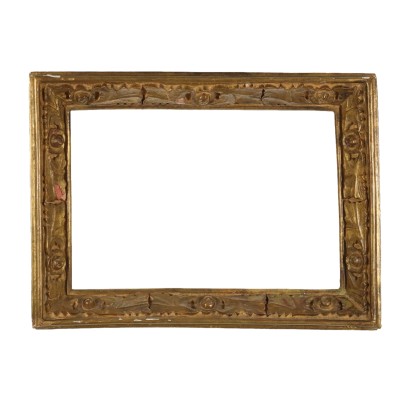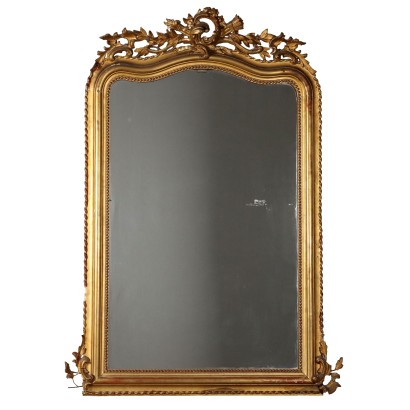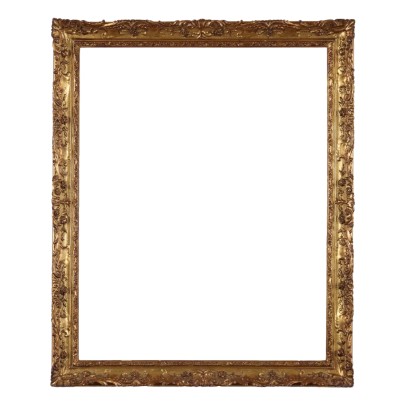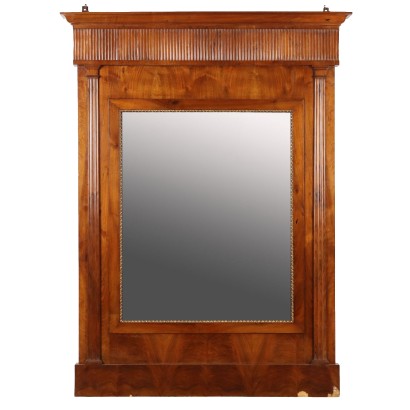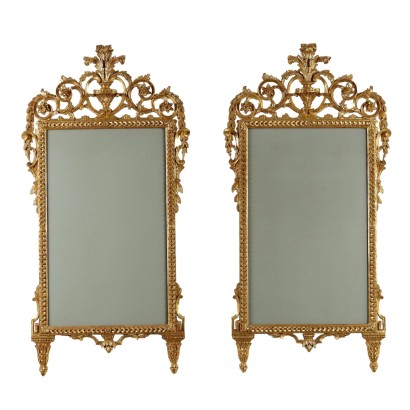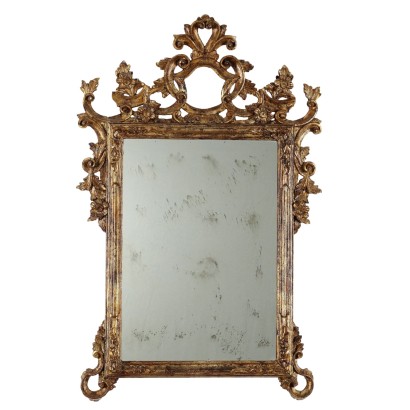In evidence
Price
Age
Dimensions
ApplyProduction country
Main essence
Style
- Louis Philippe (1830-1848) [2]
- Umbertino (1870-1900) [2]
- Neo-Renaissance (1820-1890) [1]
- Baroque (1630-1730) [1]
- Neo-Classical (1765-1790) [2]
- Barocchetto (1720-1770) [2]
- Bourbon Restoration (1815-1830) [1]
- Mannerism (1520 - 1630) [1]
- Neo-Classical Revival [3]
- Rococo Revival [2]
- Barocchetto Revival [1]
- Art Nouveau (1890-1920) [1]
- Eclecticism (1870-1890) [3]
- Empire Revival [1]
- Empire (1804-1815) [5]
- Renaissance Revival [1]
MIRRORS AND ANTIQUE FRAMES
In this section you can find all the antique mirrors and antique frames available in our catalogue, chosen by our experts to enrich any room in your home.
Do you have similar furnishings or accessories to sell? Contact us! 


Read everything
History of ancient mirrors
The very first ancient mirrors , traced back to man, date back to 3,000 BC in Turkey and were perceived as divine elements, used during sacred rituals.
Glass mirrors were born in the Middle Ages and were coloured, the procedure for lightening the glass would come later.
In the fourteenth century the antique mirror had become part of people's daily lives, especially for women.
It was really worn everywhere, around the neck as a pendant or hanging from the belt .
These antique gilded mirrors were decorated with precious stones, ivory or engraving on the gilded frame .
In our catalog you will find Venetian mirrors, antique frames and antique mirrors , which caused a sensation in the sixteenth century thanks to glass processing.
In those years, the craftsmen grouped together to keep the production technique of ancient mirrors unchanged and to prevent anyone from stealing the supremacy over glass.
In DiManoinMano we have selected some French mirrors that were made through the casting procedure.
The French mirrors have simple characteristics which, however, distinguish their elegance.
In the decorated frames there are elements such as leaves, cherubs and small decorations.
During the Renaissance, on the other hand, we moved on to the production of modern mirrors , clear and transparent mirrors.
The Baroque period marked the increase in the making of antique mirrors as furniture, with antique-style frames .
Antique mirrors were placed on special furniture, such as chests of drawers .
Sort by

